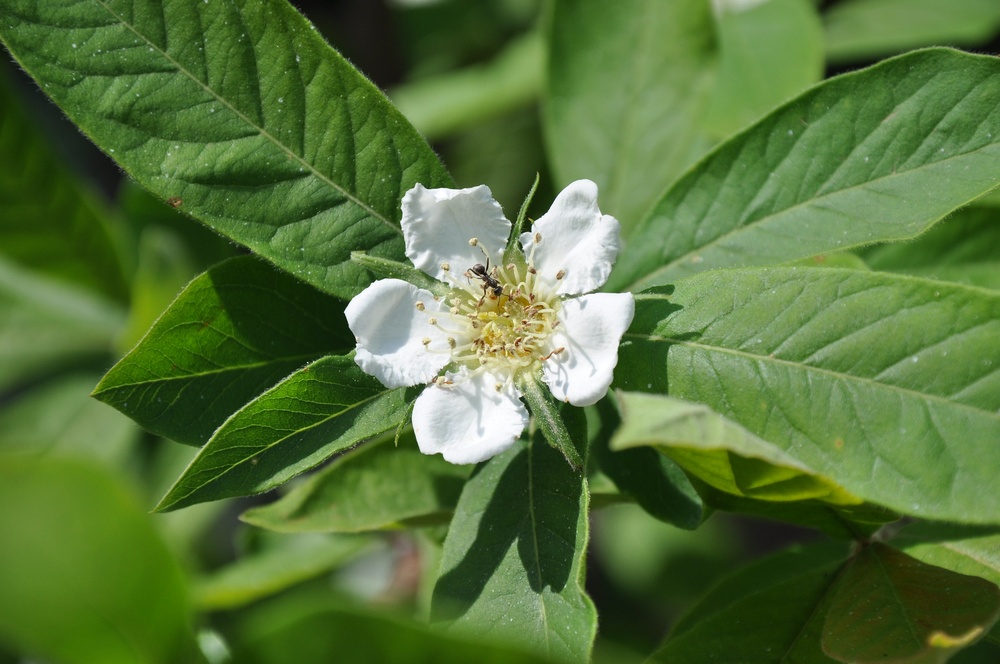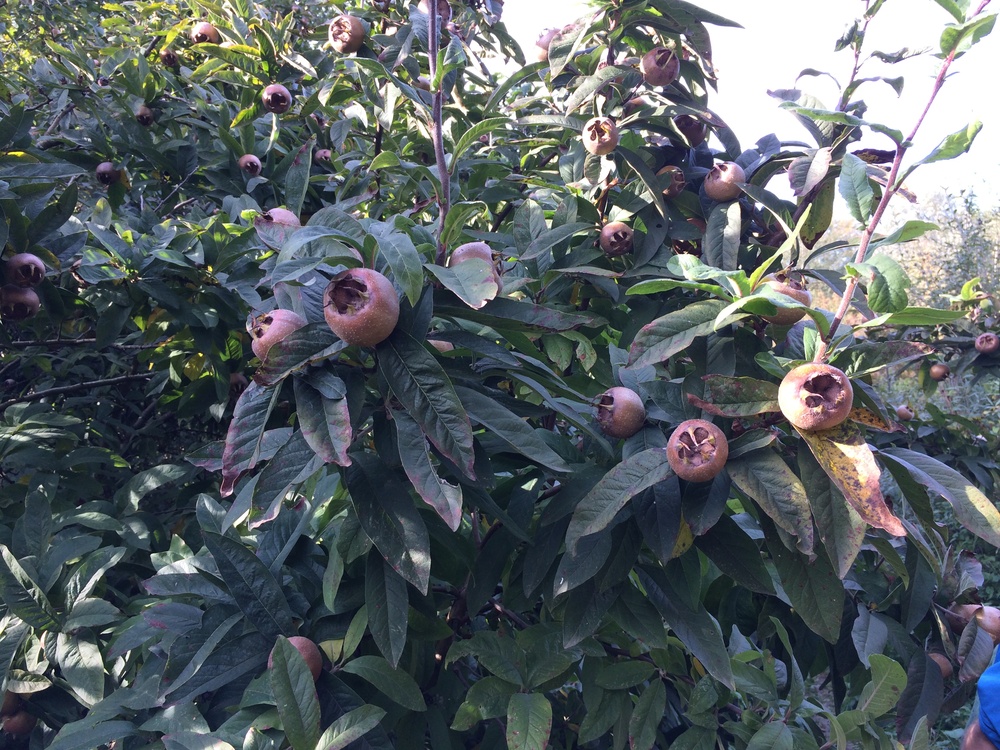Mespilus germanica
Mispel / Medlar
Rosaceae (Rozenfamilie)Asia (whole), Europe (whole), Europe (south)

Edible plant part (1)
Fruits
Read 'form of consumption' for safe preparation methods
Toxic plant part (1)
Seeds
Medlar belongs to the small trees-large shrubs in the food forest. In the process of ecological succession it is a mid species. The growth rate is medium. Fully grown the plant has an average height of 2 to 6 meter. and a width of 2 to 6 meter.
The foliage (or leaf cover) is dense. The Medlar is decidious. It buds in april.
This species forms a deep root system. This species is slightly spreading in the food forest.
 foto: Stefano, https://www.flickr.com/photos/81918877@N00/26316810270
foto: Stefano, https://www.flickr.com/photos/81918877@N00/26316810270
 foto: Stefano, https://www.flickr.com/photos/81918877@N00/26316810270
foto: Stefano, https://www.flickr.com/photos/81918877@N00/26316810270
 foto: Evelyn Derksen
foto: Evelyn Derksen
Growth factors
- Frost (whole plant)
-
very strong frostcold frostmild frostlight frostno frost
- Frost (flowers)
-
very strong frostcold frostmild frostlight frostno frost
- Light
-
full sunlight shadehalf shadefairly deep shadedeep shade
- Wind
-
strong sea windstrong windsome windshelteredvery sheltered
- Soil texture
-
sandloamlight clayheavy claypeat
- Soil moisture
-
inundationwetmoistdrydrought
- Groundwater level
-
very lowlowmediumhighvery high
- Soil acidity
-
very acidacidneutralalkalinevery alkaline
- Soil fertility
-
very richrichaveragepoorvery poor
Flowering and pollination
- Flowering period (peak)
- early may, mid may
- Flowering period (length)
- month, several weeks
- Pollination vector
- insects
- Plant reproductive fertility
- self-fertile (sf)
Life Span and Plant Health
Disease susceptibility
very resistantHarvest and Consumption
Fruits
- Harvest location edible part
- Above reach, high, but within reach
- Harvesting period - start
- Early november, mid november, end of november
- Harvesting period - length
- Month
- Harvesting period - uniformity
- Medium
- Suitable harvesting methods
- Hand
- Form of consumption
- Fresh, processed
- Natural storability
- Several weeks
- Suitable markets
- Niche
- Productive life span - start (year) - minimum
- 2
- Productive life span - start (year) - minimum
- 3
- Productive life span - start (year) - maximum
- 3
- Productive life span - peak (year) - minimum
- 30
- Productive life span - end (year) - maximum
- 100
- Productivity - start (kg) - minimum
- 10
- Productivity - start (kg) - maximum
- 20









































